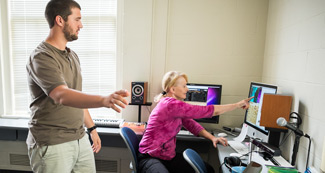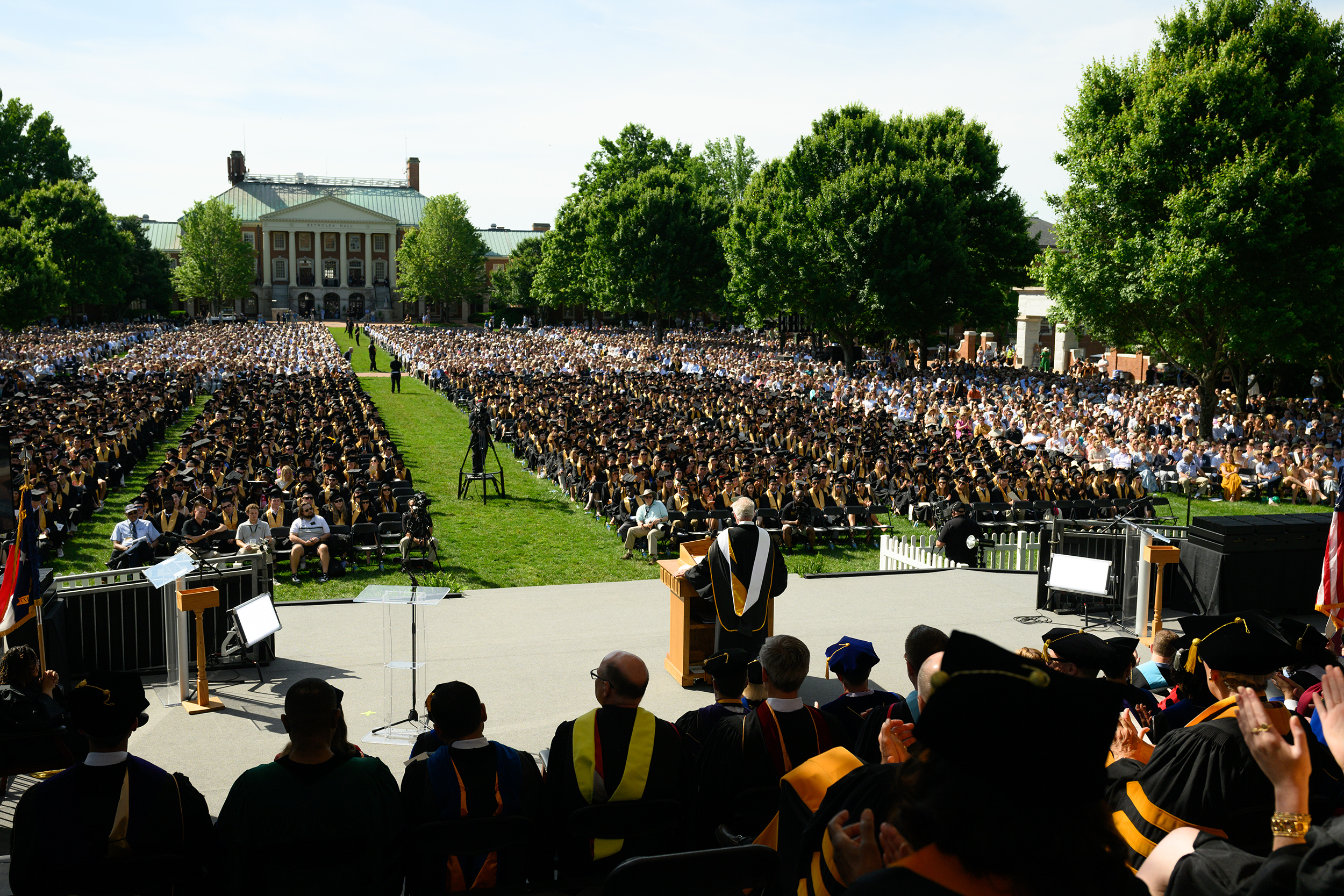A new way to train your ears
Can you tell whether the first note in a catchy new tune is an A flat or a B flat?
If yes, then congratulations. You have the exceedingly rare gift of perfect pitch.
Perfect pitch is the ability to identify a musical note without any reference. The odds a person is born with the ability (think Mozart, Chopin, Jimi Hendrix and Bing Crosby) are estimated to be 1 in 10,000 in the United States. Many experts believe that perfect pitch is borderline impossible to learn, especially after the age of 5 or 6.
Jamie Floyd, a rising senior at Wake Forest, wants to make it easier. A math major and a lifelong musician, he is working with computer science professor Jennifer Burg to develop a novel curriculum to train your ear.
Floyd is using an Xbox Kinect sensor that tracks motion and a visual programming language called Max for his platform. He said that the Xbox Kinect sensor uses an infrared projector and receiver to get information on a person’s position and movement. The Max programming language makes it possible to associate specific movements of the body, the raising of a hand for instance, with different musical notes.
“If you wave, the Xbox Kinect will record the movement,” Floyd said. “When Max is incorporated, I am able to program it so that when you wave it will generate a musical note.”
 Floyd is developing a comprehensive ear training system with the technology. It will include topics like octave identification, interval training and finally pitch identification. A user will practice by raising their dominant hand and hearing the pitch associated with that position. Once someone believes they have mastered the concepts, they can test what they’ve learned.
Floyd is developing a comprehensive ear training system with the technology. It will include topics like octave identification, interval training and finally pitch identification. A user will practice by raising their dominant hand and hearing the pitch associated with that position. Once someone believes they have mastered the concepts, they can test what they’ve learned.
The computer will generate a single pitch and the user will be asked to produce the matching hand position, the name of the note or both.
Floyd said that the hope is that after enough practice a person would know exactly where a G feels on their body. “I remember a G plays when my hand is right at my chin for instance,” he said.
Burg said the project’s overall goal is to create an improved platform for teaching perfect pitch as well as relative pitch, a more common ability where a musician produces a note when another one is played in reference.
“We are trying to come up with a more intuitive way for people to learn pitch by having them associate different sounds with different positions of the hands, a process called kinesthetic learning,” she said.
Traditionally, Floyd said learning both perfect and relative pitch have required knowledge of music theory and a propensity for auditory learning.
“A teacher will sit at a piano and will play a couple notes and ask what interval that was,” he said. “For a lot of people, especially those without a lot of musical training or who are not strong auditory learners, this is very hard to do.”
Music professor Peter Kairoff said that Floyd’s program holds great potential for not only teaching pitch to performing musicians but also for helping your casual listener appreciate what they are hearing.
“If you understand how music is put together, you will have a better appreciation of it as a listener,” he said. “Unlike a piece of clay or a canvas, sound is hard to put your hands on. This might in a quite literal way enable someone to hold it in the palm of their hand.”
Categories: Campus Life, Experiential Learning, Research & Discovery, University Announcements
Media Contact
Wake Forest News
media@wfu.edu
336.758.5237



